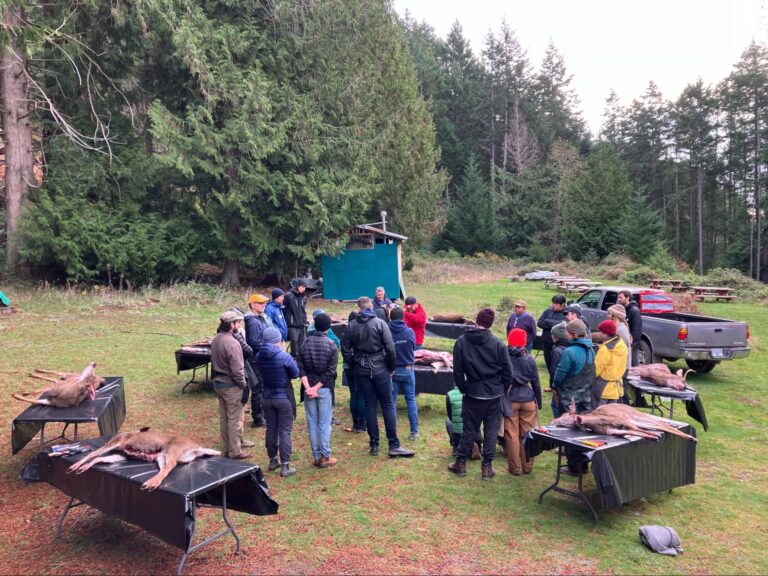Beachside Bingo!
Challenge starts May 4th and finishes May 17th
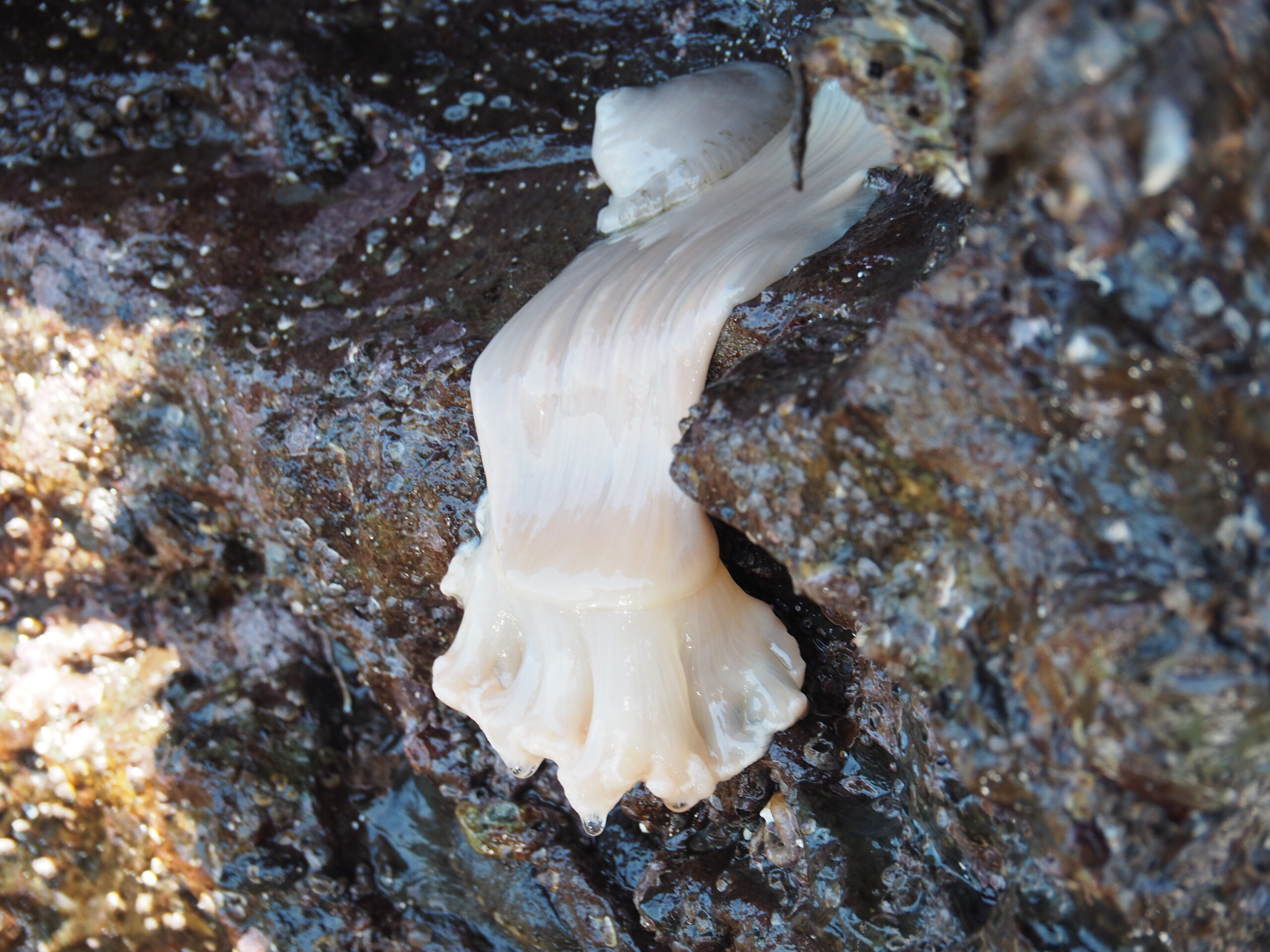
Discover the vast biodiversity of British Columbia’s intertidal zones on a walk along the island’s shoreline and beaches. The 4th DEEP Challenge is for everyone, young and old, interested in all creatures of our magnificent shorelines.
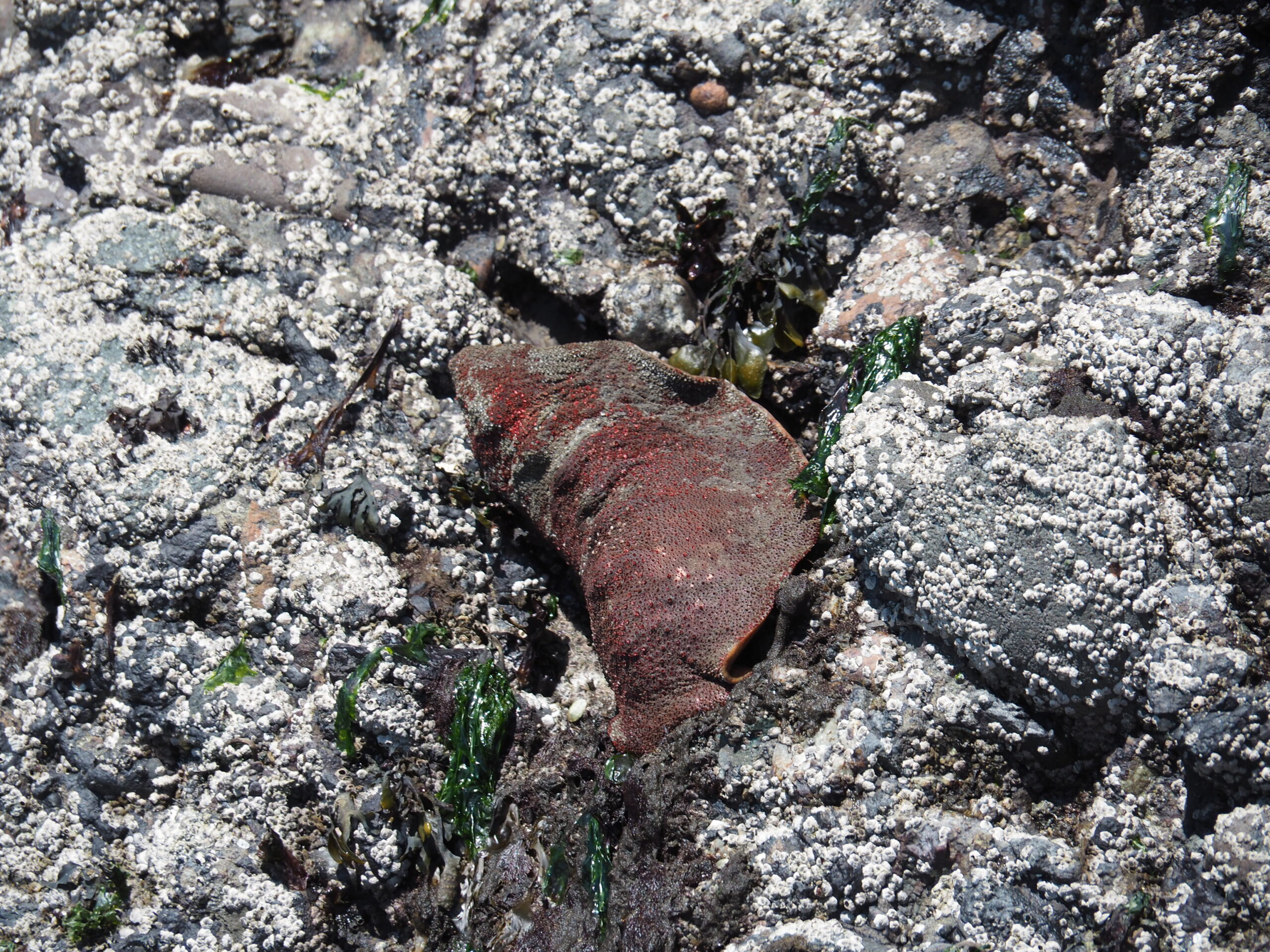
What are Tides?
Tides are the vertical motion of water – the rise and the fall of sea level, also called the flood and ebb, caused by gravitational forces created by the moon, the sun, and the rotation of the earth. As the earth rotates, creating day and night, the spinning motion creates a centrifugal force that pushes water away from the earth. At the same time, both the sun and moon have gravitational fields that pull the oceans towards them. Although the sun’s gravitational field is far stronger than the moon’s, it is felt less strongly by the oceans because the sun is much further from Earth.
The combination of all of these forces, as the moon and earth orbit each other and the sun, causes both the tidal changes throughout the day (high and low tides), and the tidal changes throughout the year (spring and neap tides). When the moon, earth, and sun align (at the new and full moons), the tides are strongest (higher highs and lower lows), and these are called spring tides. When the moon and sun’s gravitational forces pull in different directions (first quarter and third quarter moons), the tides are weakest (lower highs and higher lows), and these are called neap tides (Figure 1).
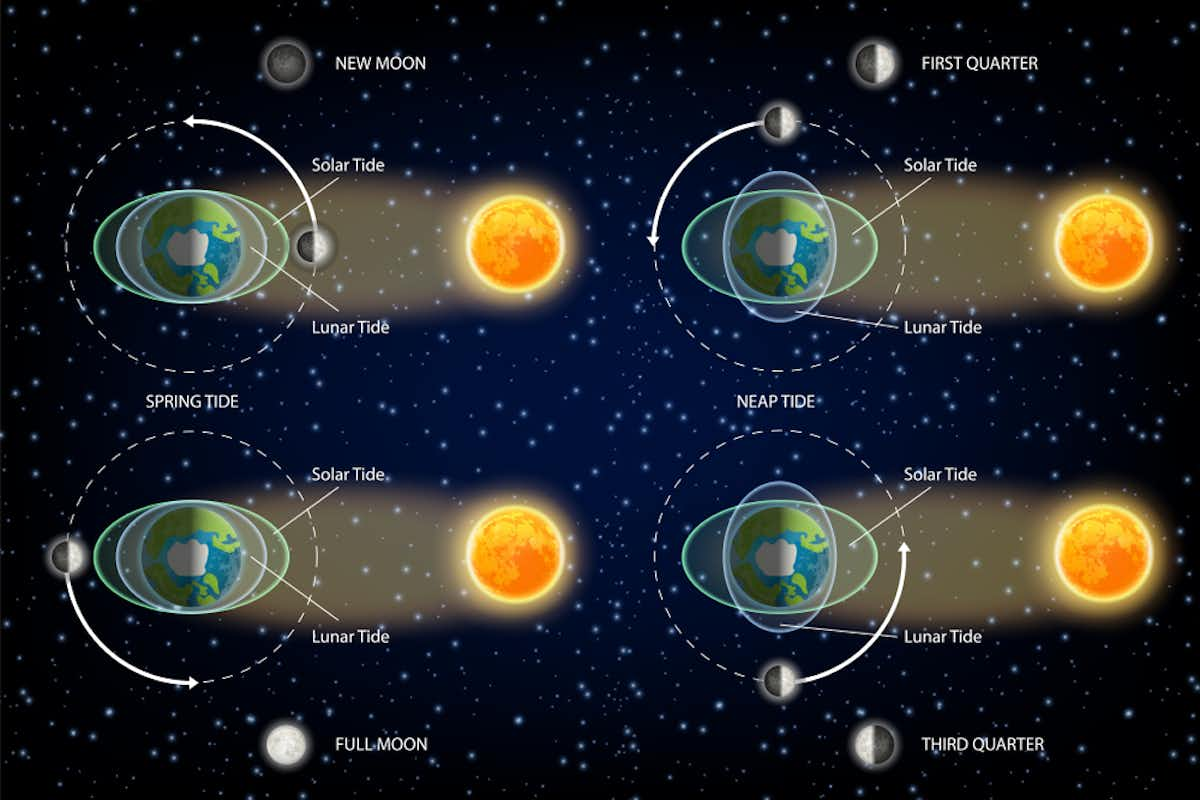
The tidal range is the difference in height between a consecutive high and low tide. Along the open coast of British Columbia, we have two high and two low tides – this is called semidiurnal tides. Those two high and two lows are of approximately equal size during a lunar day (24 hrs & 50 min).
Semidiurnal tides are most common in the Atlantic, however many parts of the Pacific experience “mixed” semidiurnal tides, where the heights of the two high and two lows are greatly different (like Galiano).
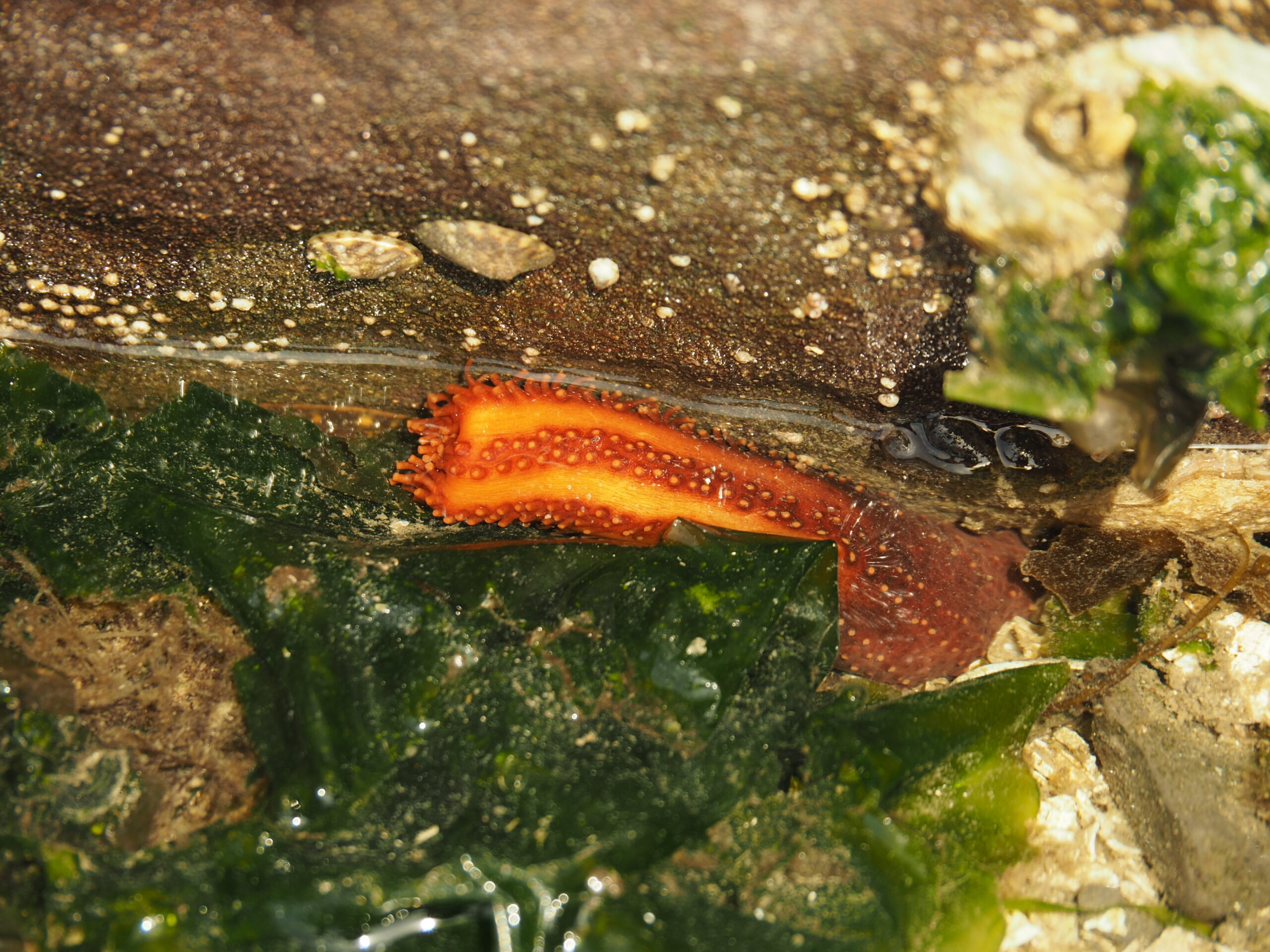
Tides reveal an ever-changing environment – hot, dry & salty, when the ebb tide drains the water away, and cool & wet when the water floods back in. All the marine flora & fauna that live in this intertidal zone between the high and low water marks have to adapt to survive the extremes of this always changing marine world. This Giant California Sea Cucumber (below) is photographed from a dock in Montague Harbour during the lowest tides of the year, around the 21st of June (summer solstice = strong solar tide).
During the spring and summer months, as the days get longer, the lowest tide each day is typically during the day, making it a great time to explore the intertidal zone. Look at the tide schedule to choose the best day and time to go to the beach!

What is Beachside Bingo?
Beachside Bingo is similar to the usual Bingo – you have a sheet with multiple species pictured in rows. You will have to find 3 of those species in one row. Our Beachside Bingo has the advantage that it can be made more difficult, by finding as many species as possible until your sheet is fully crossed out! We have five different Bingo sheets, so you can print them for your whole family and challenge each other!
Before you go out into the wild of the Salish Sea, download the Beachside Bingo Sheet/s and identify the species printed on it. Ask a family member, or a teacher (online) if you need help! If you don’t have a printer, no worries, you can even draw the creatures on a sheet, and/or download the document on an available phone to bring to the beach.
Ethics behind Beachside Bingo
Do we touch everything we find?
Before you start with the Bingo, please wash any hand sanitizer, sunscreen, and other products off your hands. For us humans, it is very interesting and important to use all five of our senses to observe other organisms, however, not every marine animal can handle being touched, or even being taken out of its natural surroundings. Here are some important rules to keep in mind:
- always wash your hands after touching a Sea Star (they are not dangerous for you, but you can transmit a virus living on the skin of the Sea Star to other Sea Stars)
- when you pick up a rock to see the intertidal life below it, never roll it over – it is very likely, that all the creatures living under and around the rock are being crushed – always lift the rock up and lift it gently back in its former place/position
- rocks you pick up should never be bigger than your head to be able to handle them slow
- if you place creatures you find in a bucket or bowl to view them better, please make sure they are small enough to fit in with space to move around, and only collect one at a time, as they may not get along!
- crabs pinch, so never pick one up bigger than your hand
- many shoreline creatures have brittle exoskeleton, please handle them gently
- BEST PRACTISE IS TO VIEW THEM IN PLACE!
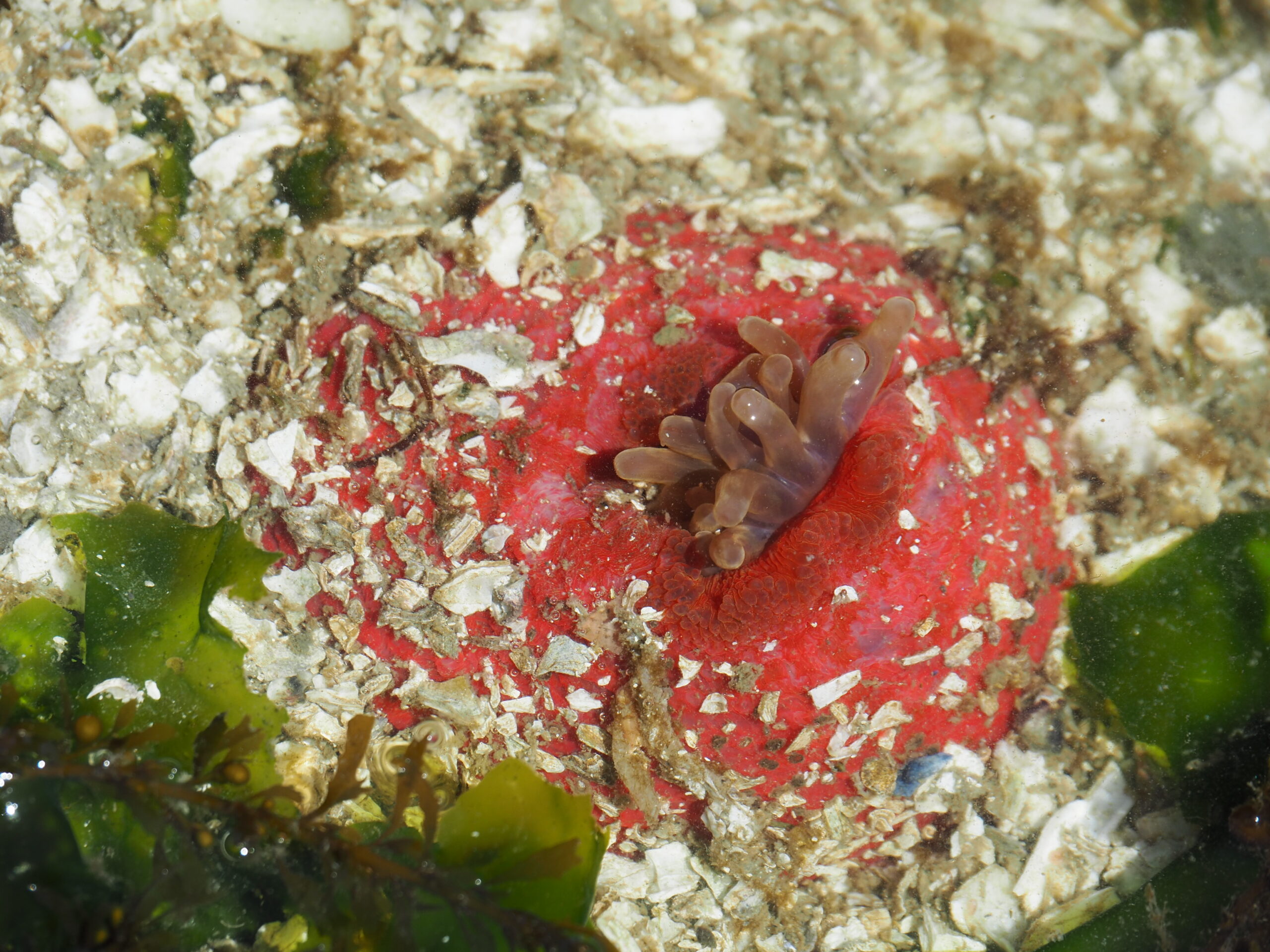
Beach Clean-up addition!
Please bring a little garbage bag, if you have time to collect debris you find walking your way along the beach after your Beachside Bingo. You can show your appreciation to all marine life, and terrestrial life with this gesture.
All collected debris can be dropped of at the Galiano Conservancies’ Millard Learning Centre during working hours, provided it is free of organics and other animal attractants.
PLEASE call ahead to arrange any debris drop off!
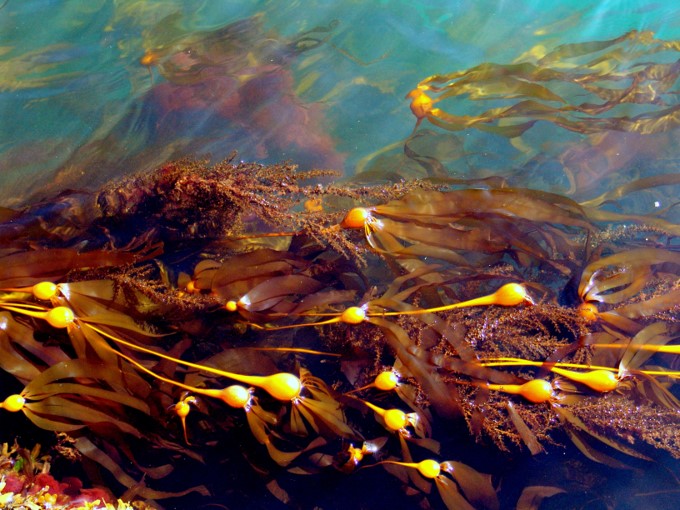
It is very exciting to get to know marine creatures living around us, have fun & be gentle in our DEEP Challenge #4!

